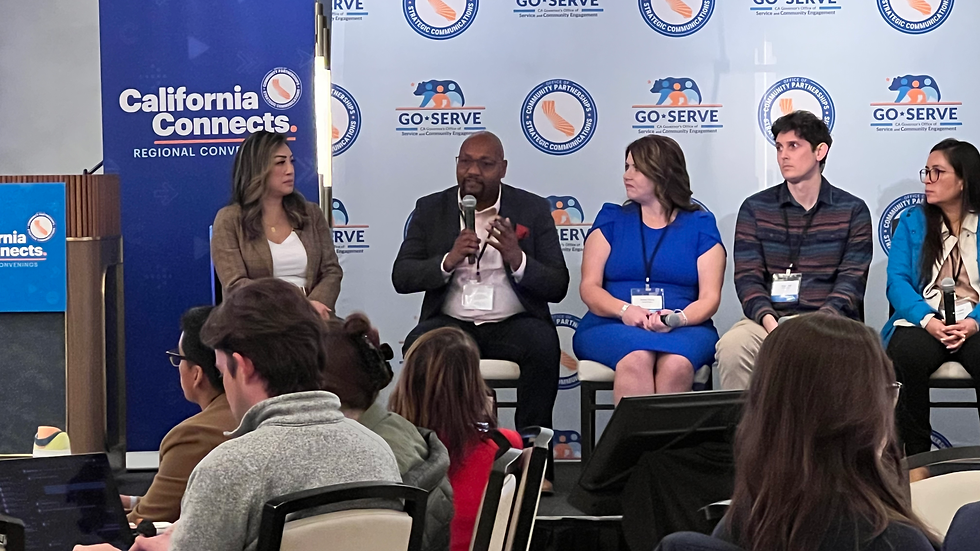Gov. Gavin Newsom’s surprise water trot to the Central Valley means emergency flow of funds for its
- INFO-MD Staff

- Feb 14, 2019
- 4 min read

PARLIER, CA – Governor Gavin Newsom made a surprise visit to the Central Valley to address the region’s drinking water crisis; consequently, signing his first bill as Governor on Wednesday, Assembly Bill (AB) 72 along with AB 73.
This first bill signed into legislation at Riverview Elementary School in Parlier, CA provides $131. 3 million of immediate relief for the Emergency Drinking Water & Fire Recovery Package. These budget bills, AB 72 & 73, provide urgent assistance for communities that have contaminated and unsafe water, and they also support communities that have been rocked by California wildfires
The legislation also clarifies that funding in last year’s budget for drinking water in schools can be given as grants to public agencies, public water systems, or non-profit organizations to help with water management, and re-appropriates the balance of 2016 drinking water funds for schools.
AB 72 specifically:
1) Appropriates $50 million General Fund for an emergency preparedness campaign.
2) Loans $10 million from the General Fund to the State Emergency Telephone Number Account to enable the state to begin making immediate progress in upgrading the microwave network as part of Next Gen 911 system activities.
3) Appropriates $10 million General Fund to continue emergency water funding for emergency drinking water and technical assistance.
4) Adds $10 million General Fund to local water districts for technical assistance related to compliance with current drinking water standards.

New California 14th District Senator, Melissa Hurtado, who resides over cities in Fresno, Kern, Kings and Tulare counties, accompanied Gov. Newsom to address the contaminated-water stricken residents through a community platform at Riverview Elementary School; the school and its surrounding community lacks safe drinking water. Gov. Newsom saw the intolerable circumstance as a wake-up call for all Californians to be better aware of what is disturbing for anyone’s conscience.
“It’s not 1819, it’s not even 1919, its 2019,” said Newsom, “and we’re talking about a $20 billion surplus, we’re talking about being the fifth largest economy in the world, and we’ve got all this bravado, and our ingenuity and entrepreneurial spirits … and we can’t even provide basic drinking water to a million plus Californians?
Pathetic … That’s a crisis for folks.”
Newsom and his administration visited Monterey Park Tract last month, which is also located in the Central Valley where residents are spending $20 to $30 on bottled water because they are worried about arsenic, manganese, and nitrates that have polluted their habitat; they can’t even bathe in the water without getting rashes, according to California Black Media news report, Governor: 'This is not Flint, Michigan. This is the state of California.
It was because of this visit that, Gov. Newsom called California's safe drinking water crisis "a moral disgrace" and called for further action to ensure all Californians can access safe drinking water.
Ironically, like the town of Allensworth, roughly 160 miles south of Monterey Park Tract, predominantly Black residents historically lived there, combating the clean-water-resource problem for decades. However, once Allensworth’s wells dried up and water resources became obsolete for its local farmers, Allensworth shut down as a town, becoming an historic state park. There are still residents living in these water-contaminated conditions in Monterey Park Tract.
However issues concerning lack of safe water throughout the Central Valley are especially prevalent due to its billion-dollar agriculture industry that dominates the farming business culture.
Previous ONME News article, A battle of vicious words becomes the scapegoat for some farmers who want to oust mayor of Tulare, Carlton Jones, stated that the use of cancer-causing pesticides to ward off unfriendly bugs that destroy farmer’s crops and income has its downside; from cancer to Valley fever, the side effects are apparent and public information. The agricultural industry in California is not regulated when it comes to these type of major details.
In 2017, the pesticide use data released by the California Department of Pesticide Regulation found that the use of hazardous agricultural pesticides in California increased by 23 million pounds (12%) in 2015 over the prior year to a staggering 213 million pounds. This is the second highest use recorded since 1990 when reporting began. Almost half of the statewide total — 100 million pounds — was used in four San Joaquin Valley counties: Fresno, Kern, Tulare and San Joaquin (Pesticide Action Network.) There was a sharp increase in the use of two carcinogenic pesticides, Telone and metam potassium, known to drift away from the fields to neighboring houses and schools.
According to an NBCBayArea.com May 10, 2017 article, as many as 1 million Californians, mostly in the farming communities of the Central Valley have dangerous levels of an unregulated chemical linked to cancer in their drinking water, according to California’s State Water Board: state water officials found potentially harmful levels of “1,2,3-TCP”, or Trichloropropane, in drinking water sources across the state all the way back in 2001.
The article continued to explain how Shell & Dow Chemicals had been selling the soil fumigants with TCP since the 1950s; dangerous levels of TCP have since then seeped into the groundwater in 94 different public water systems in the Central Valley, even though it was taken off the shelves by the 1980s. In fact, high levels of TCP have also been found in 3 public systems in San Mateo, Santa Cruz and Monterey counties.
These two companies are still fighting in court against being responsible for cleaning up these areas, where mostly underserved farming communities are being affected because the state did not have a maximum legal limit set for TCP in drinking water; they lost a case to such a claim in Clovis, CA ruling against them in 2016, awarding the city almost $22 million in damages.








Comments